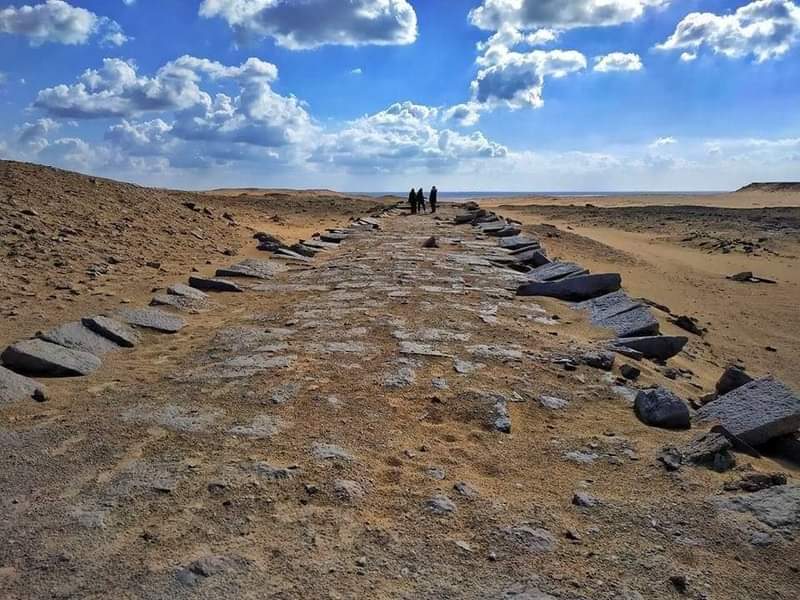WORLD’S OLDEST PAVED ROAD
Fayoum oasis.
Around 2500 BC
The route from the Qasr El Sagha temple to the ancient basalt quarries of Widan El Faras passes by an ancient road that is reputedly the oldest paved road in the world.
The road is dated along with quarry activity as Old Kingdom, with a possibility of it being of Neolithic age. At Widan El Faras the road is fully visible on the surface.
It is made from a single course of dry-laid, unshaped pieces of whatever stone was close at hand: basalt and sandstone near the quarry, and sandstone, limestone and silicified wood elsewhere.
The total length of the road, including all its branches is nearly 12 km, the last ten of which follow a nearly straight and mostly downward course from Widan el-Faras to its final destination on the shore of an ancient and now extinct lake.
The ancient road stands elevated partially above the desert due to relative wind erosion estimated at 3 cm a centur.
In the Old Kingdom of ancient Egypt, a time of grand architecture beginning about 4,600 years ago, demand for building stones for pyramids and temples led to the opening of many quarries in the low cliffs near the Nile River. To make it easier to transport the heavy stones from one of these quarries, the Egyptians laid what may have been the world’s first paved road.
Research geologists mapping the ancient Egyptian stone quarries have identified a seven-and-half-mile stretch of road covered with slabs of sandstone and limestone and even some logs of petrified wood.
The pavement, they concluded, facilitated the movement of human-drawn sleds loaded with basalt stone from a nearby quarry to a quay for shipment by barge across the lake and on the Nile to construction sites.
They said that pottery fragments at a quarry and a camp for the ancient stone workers, both discovered near the road, helped date the site to the period of the Old Kingdom, about 2600 to 2200 B.C., when major technological advances were being made, but before Egypt’s political zenith.
The oldest previously known paved road, made of flagstone and dated no earlier than 2000 B.C., was in Crete.
The Egyptian paved road, with an average width of six and a half feet, ran across desert terrain 43 miles southwest of modern Cairo. Remnants of the road were first observed early this century, but its full extent and significance were not recognized until last year, when Dr. Bown and Dr. Harrell discovered a large basalt quarry at one end of the road.
This dark volcanic stone was favored in monumental construction for pavements inside mortuary temples at Giza, the site of the Great Pyramids, and also for royal sarcophagi.
Egyptologists have suggested that the black rock was popular for funerary uses because it symbolized the dark, life-giving Nile mud. Water Link to Nile
The road ran from the quarry to the northwest shore of ancient Lake Moeris, now vanished, which would have provided a water link to the Nile each summer in flood time.
The only surviving trace of the lake is a much-reduced body of water called Birket Qarun.
As the two geologists reported, the pavement stones bore no deep grooves or other marks that might have been made by direct contact with the wooden runners of the stone-laded sleds. They speculated that logs were laid over the stones.
No similar paved roads have been found near other quarries, but perhaps the distances involved made pavement impractical.
Apart from some construction ramps associated with the pyramids, the geologists said, there are no other paved roads known from ancient Egypt. Wheeled wagons were not generally used there until many centuries after this road was built.


